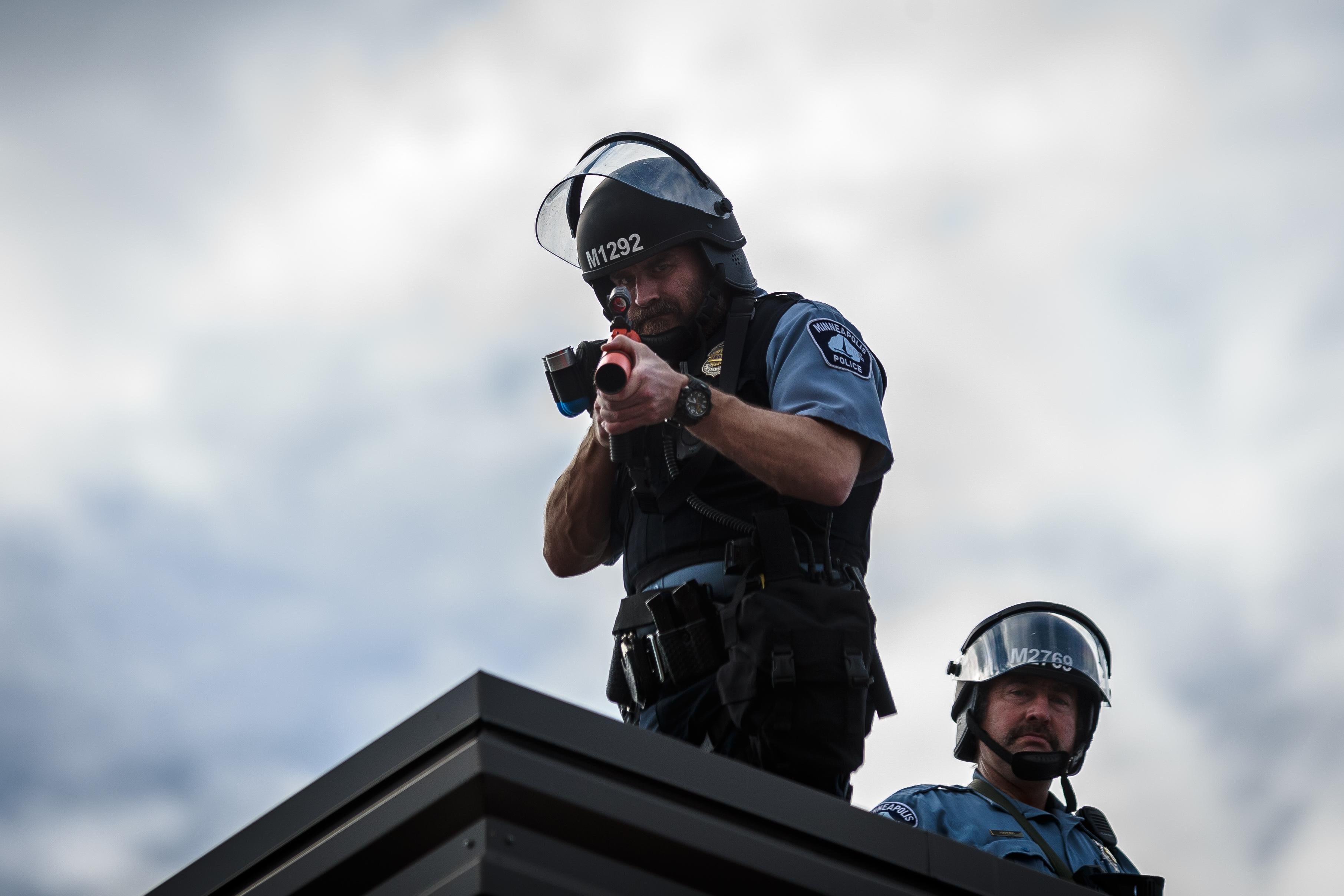Within weeks, the U.S. has seen two distinct mass protests break out. The first was organized in opposition to state government shutdown orders to limit the spread of COVID-19. The more recent protests are in opposition to police killings of black people, set off by images of George Floyd begging for his life as a Minneapolis police officer kneeled on his neck until his body went limp.
These protests couldn’t look more different. Many who attended the anti-lockdown protests across the country were armed with guns. In North Carolina, at least one protester was armed with a bazooka. They were all met by a line of disciplined police officers who were reserved and measured with the amount of force they used. In Michigan, for example, protesters were allowed to flood the Capitol where a session was underway. Police stood quietly as the anti-lockdown activists came within inches of their faces. At no point did any of the officers use force to push back or clear the space, even as armed men loomed above the legislators. Eventually, concerned about the death threats against Gov. Gretchen Whitmer, the lawmakers decided to close down the Capitol and end the legislative session rather than risk violence.
A much different sort of protest policing happened this week in Minneapolis. Things began peacefully there on Tuesday night, with organizers handing out face masks and encouraging social distancing among those gathered to protest the police killing of Floyd. From the images I’ve seen, those protesters did not appear to be armed, but eventually the night turned violent. Eyewitness accounts aren’t clear on exactly how things started to escalate, but protesters threw rocks and water bottles at police cars. Officers responded by spraying tear gas into the crowd and shooting rubber bullets at people, including one journalist. The protest devolved into a series of violent skirmishes as police used batons and stun grenades to try and disperse the crowds. Police climbed to high vantage points and fired projectiles. On Wednesday, as protests spread to other cities, the violence got worse: People started setting fires and breaking into big-box stores in Minneapolis. Five people were shot, and one was killed by a pawnshop owner. Police in full riot gear attempted to bring order with even more force.
Wednesday night looked more like a war zone than a protest. It also looked just like the aftermath of the killing of Michael Brown in Ferguson, Missouri; Freddie Gray in Baltimore; and Eric Garner in New York City. I covered all of those protests as a journalist and recognize the atmosphere in the images this week. I remember the police wearing gas masks while throwing stun grenades, and I remember people running for cover from the rising plumes of tear gas, just like they did on Wednesday night.
I have so many questions, and they are not new: Why do police react with restraint in one situation and extreme force in another? Why do they perceive some gatherings to be more dangerous than others? Why are groups armed with the same weapons used in countless mass shootings less threatening than protesters with bottles and camera phones? Why is stealing from a Target deserving of a more violent police response than a mock lynching of an elected official? Why is the defense of a shopping center more imperative than the defense of the Michigan State Capitol? Why are police launching tear gas into one crowd and not the other?
Taken on its own, the police response to the anti-lockdown protests is not disturbing. Those officers were doing the right thing by avoiding unnecessary escalation and respecting people’s right to express themselves. That’s a delicate and difficult balance to strike, especially when the protesters have guns. But the contrast is maddening. When faced with angry, predominantly white crowds, police agencies have proven that they are capable of discipline and a reasonable reaction to a perceived threat. It’s not crazy to wonder, had the police shown up to the anti–police brutality protests with the same level of restraint, might the escalation have been avoided? Riots are an inevitable consequence of systematic instability, or, as Martin Luther King Jr. called them, “the language of the unheard.” It’s not hard to see how meeting protesters who have come to stand against excessive use of force with an excessive use of force would lead to nowhere good.
In 2016, after Keith Lamont Scott was killed in a police shooting in Charlotte, a North Carolina cop acknowledged a general fear of black men among his ranks, and penned a call for his colleagues to meet and mingle with the communities they police. “I think that African-American males are treated differently by law enforcement, and that’s my honest opinion,” he wrote. “I think this fear of black men is real.” Whether or not more police officers are willing to see it, the evidence is everywhere. That fear, which my former colleague Jamelle Bouie dissected and dismantled so well in the wake of the fatal shooting of Philando Castile, contributes to the police violence that sparked the protests this week, and to the show of force police use at the protests as well.
I can’t know for sure, but I don’t think the police officers at the anti-lockdown protests felt that same fear. I’m not upset at how they responded. In fact, I find it encouraging that police are capable of de-escalating tension, rather than resorting to violence. It’s how they should handle protests against police brutality as well. Perhaps the police showed restraint in Michigan because they were able to empathize with the armed white men. They saw their humanity. Nothing will change until they can see the same in black protesters too.
